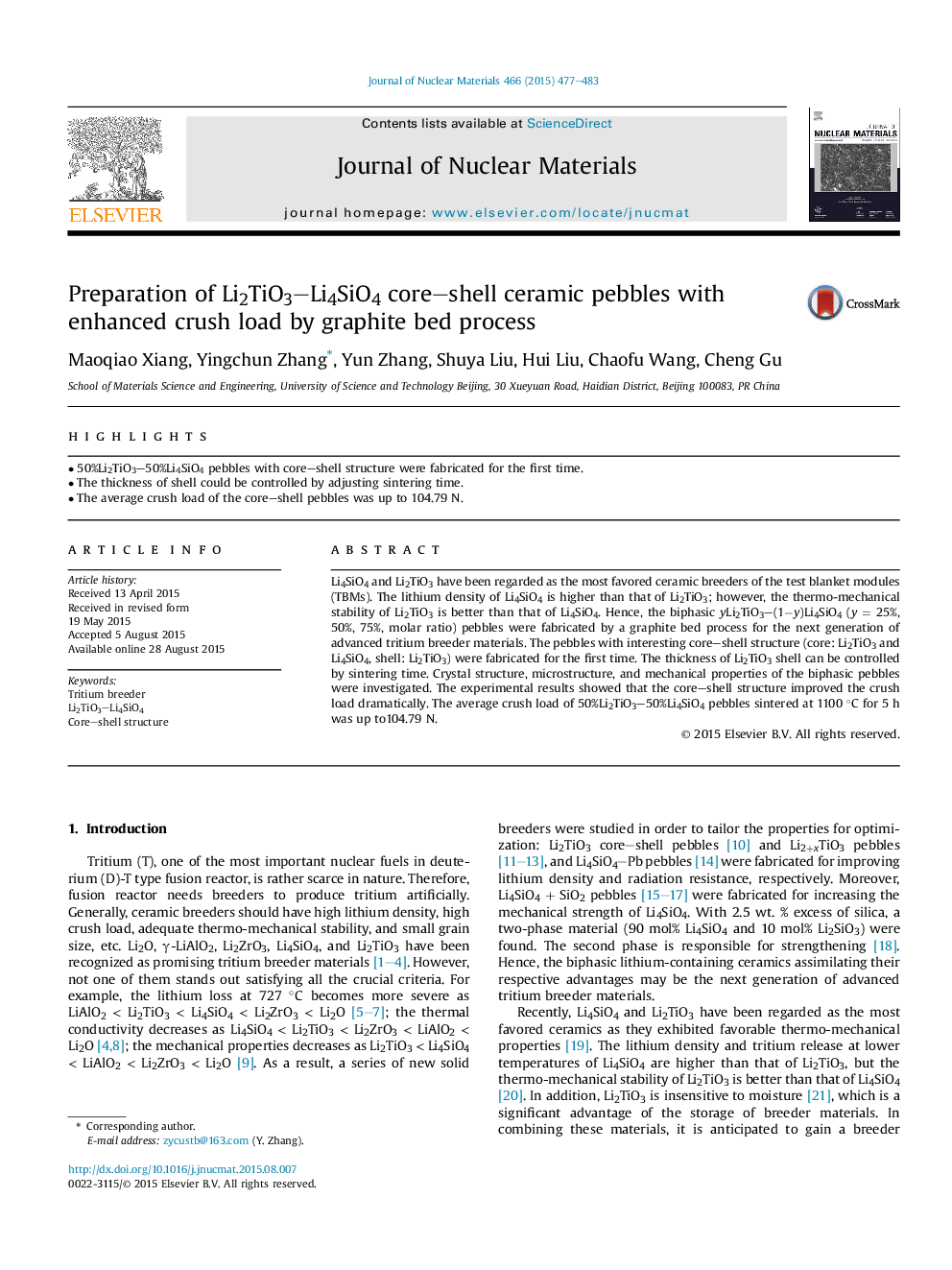| Article ID | Journal | Published Year | Pages | File Type |
|---|---|---|---|---|
| 7964983 | Journal of Nuclear Materials | 2015 | 7 Pages |
Abstract
Li4SiO4 and Li2TiO3 have been regarded as the most favored ceramic breeders of the test blanket modules (TBMs). The lithium density of Li4SiO4 is higher than that of Li2TiO3; however, the thermo-mechanical stability of Li2TiO3 is better than that of Li4SiO4. Hence, the biphasic yLi2TiO3-(1ây)Li4SiO4 (y = 25%, 50%, 75%, molar ratio) pebbles were fabricated by a graphite bed process for the next generation of advanced tritium breeder materials. The pebbles with interesting core-shell structure (core: Li2TiO3 and Li4SiO4, shell: Li2TiO3) were fabricated for the first time. The thickness of Li2TiO3 shell can be controlled by sintering time. Crystal structure, microstructure, and mechanical properties of the biphasic pebbles were investigated. The experimental results showed that the core-shell structure improved the crush load dramatically. The average crush load of 50%Li2TiO3-50%Li4SiO4 pebbles sintered at 1100 °C for 5 h was up to104.79 N.
Keywords
Related Topics
Physical Sciences and Engineering
Energy
Nuclear Energy and Engineering
Authors
Maoqiao Xiang, Yingchun Zhang, Yun Zhang, Shuya Liu, Hui Liu, Chaofu Wang, Cheng Gu,
